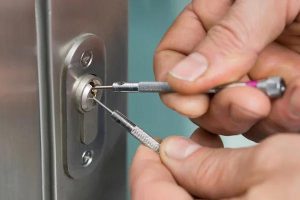The security of a home or commercial premises is paramount, and one component that plays a crucial role in maintaining this security is the door lock. The anatomy of a secure door lock consists of several components, each contributing to its overall strength and effectiveness. A locksmith’s insight into bolts, materials, and design can help us understand what makes a door lock secure.
Firstly, let’s consider the bolt. The bolt or deadbolt is the part of the lock that extends from the door into the frame to hold it closed. Deadbolts are typically made from steel, brass, or bronze. Steel bolts are considered to be more secure due to their strength and durability but they’re also susceptible to rusting over time. On the other hand, brass and bronze bolts offer good resistance against corrosion while still being sturdy enough for most purposes.
The type of bolt used also impacts security levels significantly. Single cylinder deadbolts are common in residential settings; however, double cylinder deadbolts provide an extra level of security as they require a key from both sides to open – making them harder for intruders to bypass.
Next comes material selection for locks themselves which can vary widely depending on need and budget constraints. High-quality discover further details here metals like solid brass or hardened steel tend to be more durable than cheaper alternatives such as zinc alloys or plastic materials which may not withstand forced entry attempts effectively.
Locksmiths often recommend locks with reinforced strike plates (the metal plate attached to the door frame into which the bolt fits) because these add an additional layer of protection against forceful attacks on your lock system by distributing any impact across a wider area thus reducing chances for successful break-ins.
Lastly but importantly is design consideration – how well all components work together within given dimensions without compromising functionality nor aesthetics aspects too much since nobody wants an ugly yet safe-looking front entrance after all!
One popular design feature nowadays includes keyless entry systems where users can unlock doors using codes, fingerprints, or even smartphone apps instead of traditional keys. These systems offer convenience without sacrificing security as they’re often equipped with anti-tamper technology and can be easily controlled remotely.
In addition, there are also high-security locks designed to resist lock picking and drilling attempts. These locks usually come with complex keyways and unique pin configurations that make them difficult for burglars to manipulate.
In conclusion, the anatomy of a secure door lock is a combination of robust materials, effective bolt mechanisms, reinforced components, and smart design features. A professional locksmith’s understanding of these elements can help you choose the right door lock that offers optimal protection against potential threats while fitting seamlessly into your home or business decor.














